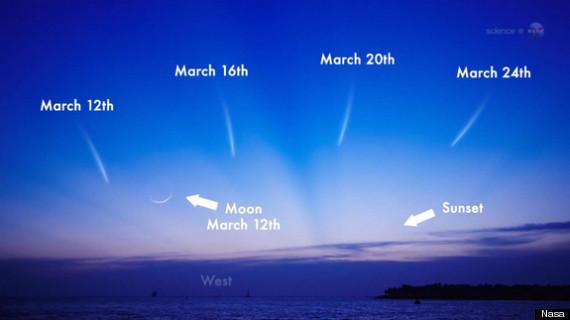The night sky is currently being used as the stage for a spectacular show by a special guest.
Comet Pan-STARRS also known as C/2011 L4, is making a pass through the inner solar system right now, almost two years after being first noticed by the Pan-STARRS telescope in Hawaii.
“It was discovered in June of2011 as a small speck, but before that it was part of the solar system region called the Oort cloud,” said physics instructor Gregory Grist. “It has most likely taken millions of years for it to reach this point.”
The Oort cloud is filled with countless icy bodies, some of which may fall toward the sun and light up when blasted by solar winds.
Pan-STARRS’ nucleus is only a few miles across but its gassy, tail-likecoma is about 10 times the size of Earth. The speed that it travels at varies throughout its orbit but its fastest speed would have been over 107,000 miles per hour when it approached the sun March 10.
“Like all comets, its nucleus is made of dust and ice; not just water ice but frozen gases such as carbon dioxide, carbon monoxide and methane,” said astronomy instructor Kevin Reil.
Although comets regularly pass through the solar system, ones that can be viewed with the naked eye are a rare treat. The last comet that could be easily seen was Hale-Bopp in 1997.
Pan-STARRS has been visible in the Southern Hemisphere since February but it has only recently become viewable in the Northern Hemisphere.
“Look to the West about 30 to 45 minutes after sunset,” said Grist. “On March 14, it will be about two fists below the moon and a bit toward the right. Right now it will look like a star with a smudge above it.”
Binoculars can be used to get a better view, but wait until the sun is completely set before viewing.
“The best skies are typically the East Bay hills,” said Reil. “You want to be above the fog and away from the city lights.”
Pan-STARRS will begin to fade as April approaches and isn’t expected to come by Earth again for another 100,000 years. If you miss it though, comet ISON might put on an even bigger performance when it comes by this fall.
“Expectations are that ISON will be an event of a lifetime,” said Reil.








